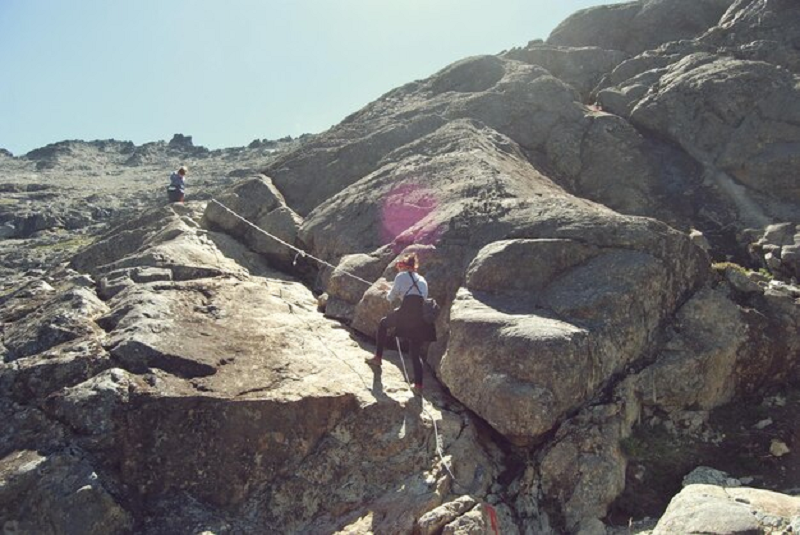What You Need to Know for Rock Climbing in Ladakh

Ladakh is normally a cold desert dotted with monasteries and beautiful passes, but beneath its unadorned beauty lies another world—vertical rock faces, granite spires, and craggy escarpments that provide a white-knuckle ride to mountaineers. For height addicts and everyone with an appetite for off-the-beaten-track country, rock climbing in Ladakh is becoming one of the region’s most exciting activities.
The distinctive landscape of Ladakh is a haven for climbers. Bouldering and vertical multi-pitch climbs are among the many climbing routes available on the region’s high-desert plateau, which has been worn and time-weathered. From beginners who wish to pass some time developing basic skills to expert climbers seeking technical ascents, the terrain has sufficient scope.
Climbing Conditions and Terrain
The climbing terrain of Ladakh is primarily granite and sedimentary rock, which offers a firm grip and mixed climbing conditions. Climbs can be had on natural outcrops, cliffs, and large boulders. Weather plays a predominant role in defining the climbing season. Climbers enjoy the best from May to September, when the weather is fairly milder, and skies are mostly clear.
As most climbing sites are above 3,500 metres, acclimatisation is essential. Thin air can have a serious effect on stamina and performance. Acclimatising for at least 2–3 days before tackling hard climbs is advisable.
Popular Rock Climbing Areas
Among all the climbing places, Shey, Stok, and Thiksey stand out because of their approachability and variety of difficulties. Shey, near Leh, is only a few steps from the city with neat rock faces available for amateur climbers as well as medium-level climbers. Stok, with its isolated atmosphere and nearby snow-capped mountains, features steeper lines, and Thiksey offers panoramic climbs next to the iconic monastery.
Some routes in Nimmo and Saspol have gained a reputation due to their technicality and stunning views. These parts are not overly busy, and the climbers enjoy solitude and uninterrupted interaction with nature.
Equipment and Safety
It is highly recommended to carry your own climbing gear, especially for serious climbing trips. Locally accessible sources can be located, but you cannot guarantee quality and availability. Essential gear consists of helmets, harnesses, climbing shoes, ropes, belay devices, quickdraws, and climatic suitable apparel.
Safety first. As Ladakh climbing culture is still in its infancy, routes are unbolted and not usually maintained. Check extra particularly on anchor points and never go solo. If you are a first-timer in the country, hire a local guide who is familiar with rock climbing in Ladakh. He will be familiar with terrain, weather, and rescue procedures, which can prove to be priceless.
Respect for Local Culture and Environment
Ladakh’s rocks are not just climbing walls—there is a spiritual and environmentally conscious landscape. Don’t destroy rock surfaces or bother local wildlife, and always pack out trash.
Also, the majority of climbing sites are near villages and monasteries. Simple dressing and deference to cultural boundaries are recommended. Friendly contact with people supports the preservation of access and the building of confidence between climbers and the community.
Outdoor Adventure Beyond Climbing
Rock climbing in Ladakh is not the end of outdoor adventure there. The region offers great opportunities for trekking, mountain biking, white-water rafting, and camping. Usually, rock climbing is paired with other activities to provide a more complete picture of Ladakh’s pristine landscape.
The precipitous cliffs and sweeping views also offer fine photography and a time of reflection. Following a day of ascent, sunbathing near an alpine stream or a nearby monastery can create a fine counterpoint to the adrenaline of the climb.
The Role of Dream Land
Local knowledge can be extremely helpful to those who have no knowledge of the country or the climb arrangements. Dream Land, an experienced regional outfitter, has quietly helped all types of adventure travel in the region, such as rock climbing and trekking. Their familiarity with unmapped places and their ability to set up permits, guides, and local transport serve as a valuable planning tool for organising climbing excursions. Though not an expert climbing agency in itself, awareness of Ladakh’s geography allows for some safety and security for those wishing to travel to remote and unforgiving regions.
Final Thoughts
Rock climbing in Ladakh is not a physical strength test—it’s a venture of old rocks, thin air, and uncharted land. It’s a challenge to your forbearance, solidity, and inherent sense of wonder. Ladakh is establishing its low-profile reputation as an international-standard mountaineering destination as increasingly more climbers look in the direction of the Himalayas.
Acclimatisation, preparation, and familiarity with the terrain in the surrounding area are essential to be safe and to achieve your adventure. Rock climbing is most likely the most rewarding aspect of your outdoor adventure in Ladakh if you prepare in advance and have a responsible mind.






